Ranunculus and Anemone are the two cut flower super stars of spring. Of course there are also tulips and daffodils, but in my opinion they cannot hold a candle to the abundant petals and unique look of Ranunculus and Anemone. This delightful duo are commonly grown together because of their similar cultural needs. They both like a long cool establishment period before making an impressive entrance in early spring. In order for them to bloom it is best to purchase them and plant in the fall much like a tulip bulb. You can take the hands off approach and let them hang out until spring or you can pre-sprout them and grow them in a hoop house for extra early blooms.
http://www.weddingbee.com/2009/03/27/spring-in-bloom/
http://www.whatabloom.com/blog/2012/05/flowers-a-to-z-a-is-for-anemone/
Another thing they have in common is their humble beginnings. They start out looking like miniature alien squid creatures and stale crusty wrinkly Hershey’s Kisses, but don’t let them fool you they will transform into something amazing. They are the Cinderella story of the plant kingdom, the ugly duckling that turns into a beautiful swan or the toad that becomes a prince… Okay that’s enough Disney for one post.
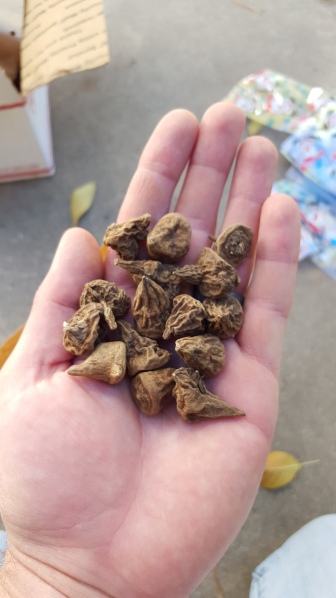
“Stale Crusty Wrinkly Hershey’s Kisses” A.K.A Anemone Corms
Miniature Alien Squid Creatures A.K.A. Ranunculus Corms
The following instructions are compiled from several books and many websites to grow the best possible Ranunculus and Anemone flowers that I can in zone 5b / 6a. However, this may not be the best method for you in your climate/ zone. You can determine what zone you live in with a quick google search.
I ordered these extraterrestrial looking things from Gloekner seed and bulb company. They have very high minimum orders so they are probably not the best source for home gardeners. Your local nursery or an online retailer would probably be best for the hobby gardener. When you get them they are very dry and hard as rocks. I ordered La Belle Ranunculus because they are supposedly the best for cut flowers, but I have also heard good things about Biancheri and Super Green varieties. I ordered Meron and Galilee Anemones because I have read that they are the best for cutting as well. If you are a hobby gardener or landscaper you could buy any variety and they should be fine.
You soak the roots in a tub of cool water with a small trickle of continuously running water to keep them aerated. Leave them for 2-3 hours followed by a 30 minute soak in a preventative anti fungal solution. I used Captan brand anti fungal, but you could skip this step entirely and you would probably be okay. I just want to be extra careful. I mixed 2 Tablespoons of Captan per gallon of water. You can find horticultural anti fungal solutions at your local nursery or online. I put my roots/ corms into individual plastic bags with holes in them to allow water to pass freely through the bags because I wanted to keep each color and variety separate. (You could just put them all in the bucket together if you don’t mind mixing up the colors.)

After soaking the ranunculus were plump and twice as big, the anemone were slightly softer but not squishy. I am wearing rubber gloves because the roots still have fungicide on them.
After the soaking step they can be planted into plug trays like I did or they can be directly planted into the ground. They like lots of organic matter so mix in some garden compost or composted manure into the soil before you plant. If you use plug trays make sure they are brand new or clean them with soapy water and a little bleach to kill any fungi or pathogens. I used 98 cell plug trays, but 50 cell trays would have been a better option.
Here are the Anemones and Ranunculus tucked snugly into individual cells. About 500 in all!
Here is my little gardening assistant Hinley. She loves playing in the water and dirt, but not as much
as she loves her Binky… as you can see.
If you plant them directly into your flower bed, congratulations you are done. You can sit back and wait for the beautiful bounty that spring will bring. If you choose to plant them in a hoop house, the fun has only just begun…
Let the roots/ corms sprout in their plug trays someplace cool. You can put the whole thing in your refrigerator or someplace that stays cold. I chose a root cellar. Cover them with garbage bags to retain moisture and check on them every so often to make sure they aren’t growing mold or rotting. They should start to grow roots and sprout in 10-13 days. The colder they are the longer it will take, but don’t let them get above 55 degrees Fahrenheit or below freezing.
After they have sprouted you can plant them in your hoop house or greenhouse. Make sure to check back soon for Part 2!
Thanks for reading,


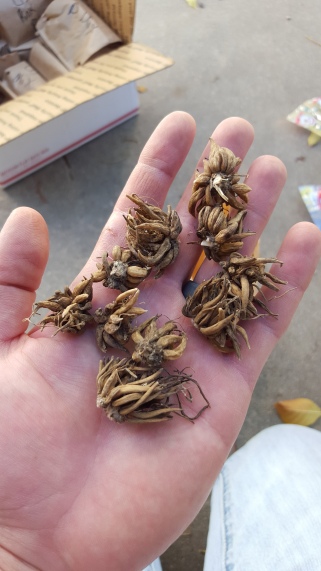

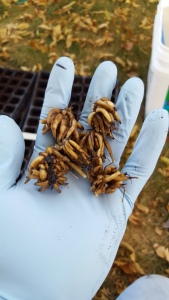



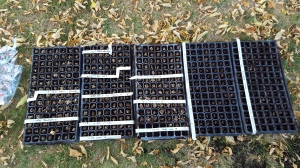
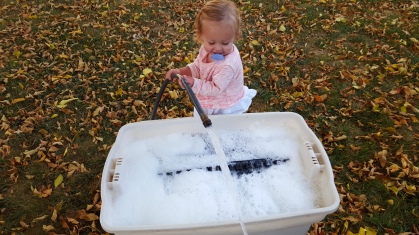

Looking forward to part 2!
LikeLike
Great blog! Excited to see another Flower Farmer in a zone similar to mine. I’m 30 miles south of Chicago (zone 5b/6a). COLD winters and HOT, HUMID summers. Can’t wait to see how we do next year!
LikeLike